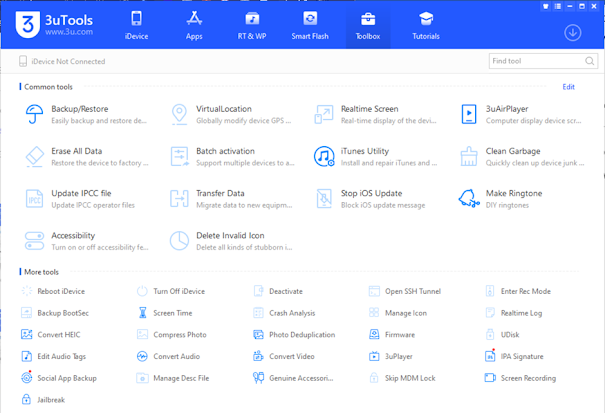Security misunderstanding: exploiting intervals in digital defense
In today's rapidly developed digital landscape, businesses rely more on web applications, cloud services, APIs and network infrastructure to serve customers and manage data. However, even the most sophisticated system can be weakened due to a single, often ignored the unseen issue. The OWASP Top 10 listed prominently as the most exploited by the safety misconnancy weaknesses Cyber Criminals. These weaknesses arise when the application, server, or network are incorrectly configured or their defaults are left in unsafe states.
This broad guide explains what safety misunderstanding is, how attackers exploit these weaknesses, real-world examples, general attack vectors, and most importantly exploit the most important practices to protect their outfit from this threat.
What is safety misunderstanding?
The safety misunderstanding refers to improper implementation of safety settings or discarded default configurations in software, application, operating system or network infrastructure. These make the surfaces of the missile attacks that hackers can exploit with minimal effort.
Examples include:
- Using default user names and passwords.
- To highlight unnecessary ports or services.
- To enable detailed error messages in production.
- Failed to remove testing or unused features.
- Misconfigured http header or cloud storage permissions.
Even well -safe applications can be compromised due to a weak link in their configuration.
Common causes of safety misunderstanding
- Default Settings: Sellers perform software ships with default configurations that may not be safe.
- Improper permissions: Highly permissible file system or database.
- Exposed management interface: unsafe administrator console or dashboard.
- Lack of patch management: old components with known weaknesses.
- Action error message: These leak sensitive servers or code information.
- Unsecured Cloud Configuration: Open S3 bucket, unsafe API, unrestricted access control.
How attackers exploit security misunderstandings
1. Default credentials
The attackers use the tool to scan for services using the factory-set user names and passwords such as administrators/administrators or root/passwords. Once inside, they can increase privileges and control the system.
2. Open ports and services
Scanning tools such as NMAP allow hackers to discover open ports. Services such as FTP, SSH, Telnet, or Internet exposure to the Internet can be improperly secured.
3. Wrong cloud storage
Publicly accessible AWS S3 buckets or azure drops are goldmines for attackers with sensitive information. These are often indexed by the search engine.
4. Unupdated or old software
Older software components often know weaknesses. Attackers can exploit them using automated tools or scripts.
5. Verb error message
When the application displays a detailed error log or stack mark, the attackers attain insight into the backnd structure, helping them to craft targeted feats.
Examples of real-world of security misunderstandings
1. Capital One Breach (2019)
One of the biggest data violations in history. More than 100 million customer records were compromised due to a wrong AWS S3 bucket and firewall.
2. Microsoft Power Apps (2021)
Misscontar Power Apps portals exposed 38 million individual records, including names, Kovid -19 vaccination data and contact information.
3. Tesla Kubernetes Console (2018)
A wrong Kuberanets Admin Console was exposed, allowing the attackers to perform cryptocurrency mines on Tesla's AWS atmosphere.
Detection technique
Automatic Safety Scanner:
Use devices such as Nessus, Nico, or Acunetics to scan for open ports, default credentials and old components.
Manual penetration test:
Check for the wrong header, exposed directory, or excessive permissions.
Configuration Management Equipment:
Use Ansail, Chef, or puppet to maintain frequent configuration in the atmosphere.
Cloud Safety Asana Management (CSPM):
Identify incorrect cloud resources in AWS, Azure, or GCP.
Security Information and Events Management (SIEM):
Log and analyze events related to configuration change or discrepancies.
Effect of security misunderstanding
- Data violations: To highlight sensitive data for unauthorized users.
- Reputation damage: The public trust disappears after a violation.
- Financial loss: Regulatory fines and incident reaction costs.
- System downtime: Interests can prevent recovery operations.
- Unauthorized access: Attackers receive control of important infrastructure.
Best practice to prevent security misunderstandings
1. Disable unnecessary facilities and services
Enable only the services essential for functionality. Disable test features, administrator console, or old protocol (eg, telnet).
2. Change default credentials
Always change the default user name and password before deploying applications or equipment.
3. At least privilege theory
Give users and services only grants permissions they need to do their tasks.
4. Regular patching and updates
Maintain an active patch management policy for software, plugins and operating systems.
5. Security strict guidelines
Follow the seller provided by the seller or followed the strict checklist (eg, CIS benchmark).
6. Environmental isolation
To avoid data exposure, keep the production, development and test environment separate.
7. Safe error handling
Disable detailed error reporting in production. Secure the errors safely log and show the generic messages to users.
8. Configuration management automation
Automate and monitor the configuration purinogen using the infrastructure as a code (IAC) tool.
9. Web server hardening
- Remove the default page and script.
- Disable the directory list.
- Set the appropriate HTTP security header (CSP, X-Frame-Options, X-Type-option).
10. Use web app Firewall (WAFS)
A WAF can help detect misunderstandings and detect malicious requests and block.
Security misunderstanding in cloud
As the cloud adoption increases, the cloud is a risk of misunderstanding:
- Exposed storage: public S3 bucket, open file share.
- Excessive IAM permissions: roles with admin in services.
- No encryption: data not encrypted on comfort or transit.
- Misscontar Safety Group: Open port on EC2 examples.
- Lack of monitoring: No logging or alert set for configuration changes.
The cloud environment requires dedicated equipment and policies to prevent misunderstandings:
- AWS Configer
- Azori policy
- Google cloud security command center
OWASP Guidance on Security Misconfiguration
Owasp lists safety misunderstanding as one of the top risks for top 10 web applications. His major recommendations include:
- A repeatable security strict procedure.
- Automatic scanning and configuration verification.
- Review and update the configuration regularly.
- The atmosphere and role-later separation of access control.
conclusion
Security misunderstanding is still a silent dangerous danger that often arises from human error, lack of automation, or ignorance of best practices. Due to its simplicity, it is one of the most common initial access points for the attackers.
Preventing misunderstandings involves more than only one checklist - this requires an organizational culture of security, ongoing audit, automatic equipment and team accountability. By integrating strong configuration management and continuous monitoring, you can significantly reduce the risk of compromise.
In cybersecurity, configuration is everything. Return it for the first time - or the risk of paying the price later.






Comments
Post a Comment